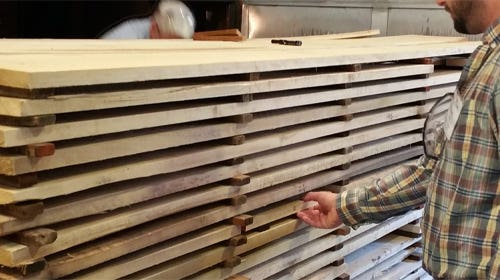Walnuts appeal gets a boost from dark wood trend
For those who believe that the domestic wood markets are in the pits, think again. Maple is holding its own, cherry remains strong and, according to several dealers, black walnut…
For those who believe that the domestic wood markets are in the pits, think again. Maple is holding its own, cherry remains strong and, according to several dealers, black walnut is at the top of the heap. Solid supplies, stable prices, consistent quality and a trend toward darker woods have brought walnut back to the forefront of domestic woods. For those doubters, read on.
{loadposition position10}
"Walnut is moving and has probably been the top seller for us during the last couple of years," says Christ Groff, owner of Groff & Groff Lumber in Quarryville, Pa. "We sell to furniture makers and cabinetmakers. It's anywhere from 4/4 to 12/4, big slabs, you name it - as long as it is walnut. We haven't had any supply problems. I dried 10,000 board feet each month all summer long, while everybody else had quit buying and drying it because sales were way low, so I'm in good shape."
Black walnut (Juglans nigra) primarily grows in Kansas, Oklahoma, Missouri, Illinois, Indiana and Kentucky. The trees reach heights up to 100' with diameters of 3' to 4'. The sapwood is nearly white, while the heartwood is brown to chocolate-brown. Walnut is often steamed at a mill or kiln to darken the color of the sapwood to match the color of the heartwood. Walnut only represents about 5 percent of U.S. hardwoods.
Although the housing market is down, U.S. homeowners continue their cyclical change from lighter woods to darker woods and then back. It would appear that a trend back to darker woods is under way.






